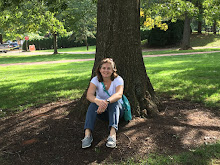Learning Creative Learning - Week 5 - OPEN LEARNING
Open Source typically refers to software development and programming language that is open, free and available for multiple users to work with, store, copy and improve. Wikipedia is a popular example of an open source software.
How can open source apply in other areas of learning? Blogging was offered as one example - the ability to create a blog allows learners autonomy and agency as well as the ability to connect with a network of practitioners in different settings. Blogs by students at Art at the Center have been a great tool for reflection on learning stories, sharing experiences in the studio and developing habits of observation and personal voice. It is a way to celebrate the creativity we see and set an example for others of the sort of relationships and experiences possible in the studio.
Below are links to Art at the Center student blogs:
Art at the Center
Making Art with Children
Art at the Center Internship
Dara's View
Internship
Many of the values of open source learning are particularly relevant in the art studio as well.
One is the idea that sharing is good and that technology should be under the control of the users. This is very relevant to a studio practice of teaching skills as they serve student ideas rather than as prescribed assignments. Learning to make a pinch pot is that much more relevant when it serves a student's idea to use the form to create the shell of a turtle sculpture. Clay hand-building techniques are a very basic technology; different ones resonate with different sculptors. Having menus and guides available to support user ideas is key to development of skills on the way to creating personally meaningful work. So often the sharing of technical skill comes from peers rather than from the instructor. Again, this is a great example of how the skills and process are owned by the children using them.
Agency is a key word in open source because learners choose how to participate in the setting.
Finally, I think the way that open source resonates most for me is the idea that things should be transparent - we should be able to crack them open and see how they work. This is key to what I value in the studio. It should be a place to de-mystify the artistic process and materials. As much as possible we choose everyday materials over fancy art supplies. We find ice cube trays work better than artist palettes for young painters mixing color. At the same time we are modeling for the young artist and his/her parent that what is important is the place to explore color - it is not about fancy tools.
Art is open-source. Artists love to share techniques and ideas with other artists. The studio should be a space to help introduce newcomers and beginners to this language of sharing so they have that many more places to look for inspiration and ideas.
Tuesday, May 14, 2013
Subscribe to:
Post Comments (Atom)

No comments:
Post a Comment